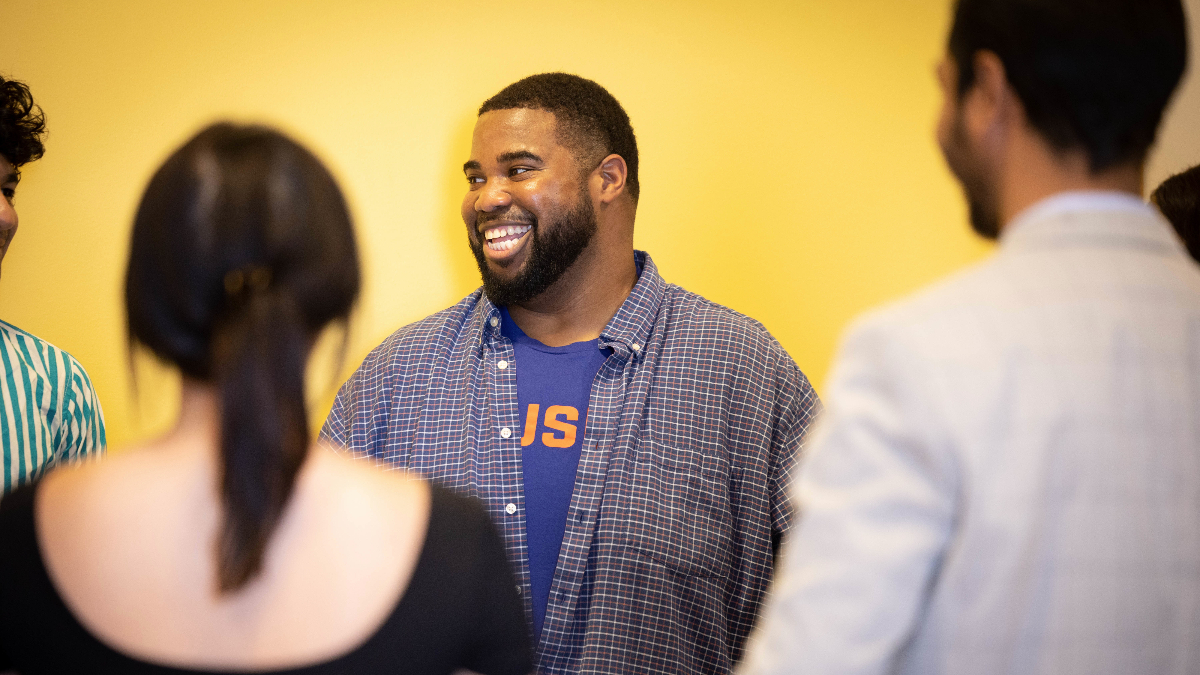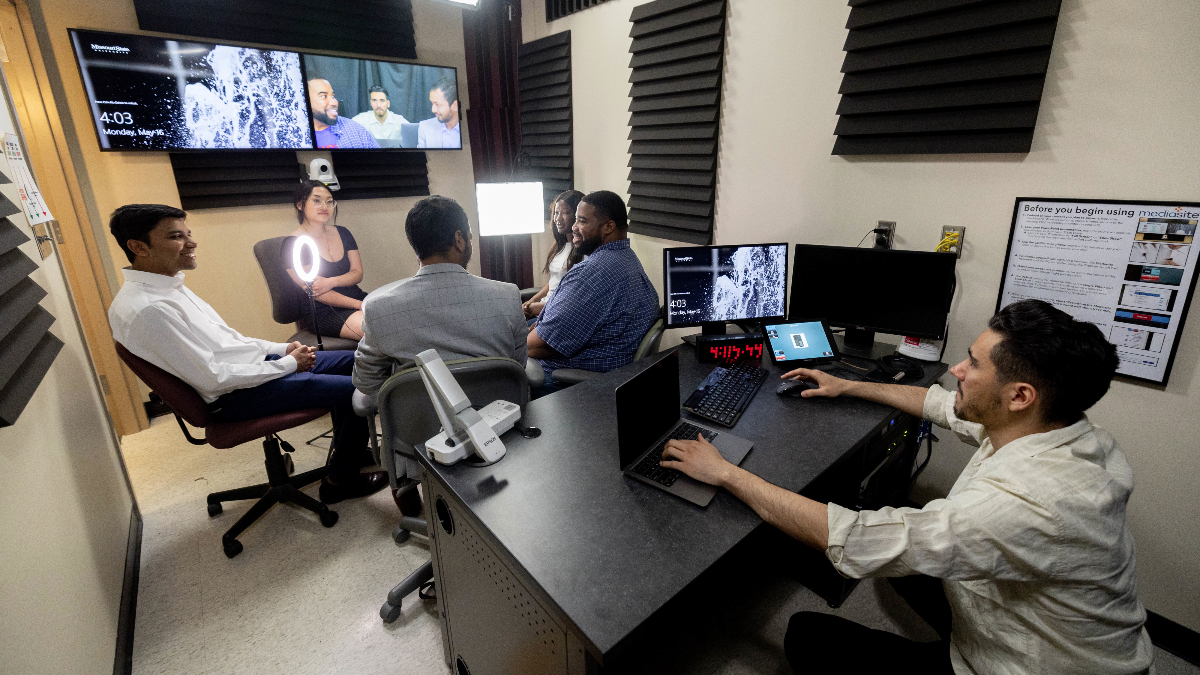
Working through differences
It’s true. Teamwork can elevate a project and produce successful results. But it’s also common to hear – or feel – an exasperated groan at the mention of group projects. They can be laborious and frustrating.
“I love exploring these team or workplace interactions – both good and bad,” said Dr. Stephen Spates, assistant professor of communication at Missouri State University.
In his research, Spates works with a team of collaborators and co-authors on two interrelated topics. His primary research deals with how groups form and solve issues in health spaces. His secondary research focuses on how people interact when there is more diversity among group members.

Dr. Stephen Spates poses questions like, “What happens when people from different cultures come together? What do those dynamics look like?”
Forming teams
In many health care settings, these transdisciplinary teams are the norm. Providers come together, share their approaches and give input about individual treatment plans or administrative decisions.
“While the focus from each perspective is a patient’s well-being and quality of life, physicians, nurses, social workers, surgeons and chaplains may attribute more or less value to different factors,” he said. “They ultimately may have very different ideas of what is best.”
In particular, the chaplain’s role has fascinated Spates since his time in health care marketing.
“I focus on workplace relationships when they’re good and when they’re not so good. That becomes the umbrella for my research.”
For a recent research project, he developed a case study about the challenges chaplains face in a team tasked with planning a new hospice-style hospital wing. For instance, chaplains’ opinions may be discounted since chaplains are not medical personnel.
This scenario is the basis for a 2020 published article, which also offers strategies and tactics for overcoming challenges like this in a health care team.
“We see a battle happening as the group struggles to accept and value the traditional medical voices and others equally,” Spates said.

Having tough conversations and finding common ground: that is part of Dr. Stephen Spates motto. He does this in his classes and with his collaboration with Missouri State’s Ad Team.
Strategies for success
To succeed in these transdisciplinary teams, Spates’ article suggested members take time to build the team before tackling the task. This involves building trust and generating understanding about why each person was selected for the team.
Participants should contribute equally to discussion and brainstorming, Spates said. This can eventually help everyone value all the perspectives presented.
Spates also stressed that assignments should be delegated equally to ensure every team member is truly contributing.
“These challenges are common in organizations, but the hospital setting is unique because of the high stakes involved. You’re literally talking about life and death,” said Dr. Catherine Kingsley Westerman, associate professor of communication at North Dakota State University. She is a co-author on this study and a common collaborator with Spates.
“Coming up with some communication-based solutions for those teams was a great contribution.”
Now that Springfield, Missouri, has a chaplain training facility, Spates envisions collaborating on future projects to dive deeper into the experience of the chaplain.

In his Introduction to Health Communication class, Dr. Stephen Spates encourages cooperation within transdisciplinary teams.
Increasing understanding
In his secondary research projects, Spates poses questions like, “What happens when people from different cultures come together? What do those dynamics look like?”
As an extension of this, he teaches a graduate course focused on communication and diversity in the workplace. In it, students discuss taboo topics.
“I like to say, what’s my next exploration, what do I want to explore now? And a lot of the titles of my works talk about exploring relationships.”
Then, they expand their understanding of how to work with people at opposite ends of the spectrum on these topics, which are often value-based.
“We navigate these topics that are part of our identities in different ways,” Spates said. “How do we – in our different perspectives – still work with people and communicate effectively?”
Making it a game
Because of this expertise, it was a natural fit for Spates to consult with Missouri State’s Ad Team in spring 2021. The U.S. Department of Homeland Security charged university advertising teams across the nation to compete to create an integrated marketing plan to prevent radicalization strategies.
MSU’s final project, Fuse, won second place nationally.
“It’s a game that allows people to come together and talk about some of these hot topics in a way that diffuses or deescalates,” he said.
Another reason he thinks Fuse stood out? Games force people to communicate, he said.
Spates employs gamification strategies in his classroom, too. In 2021, he published an article about the effectiveness of games in organizational communication classrooms.
“Games can get through in a different way to students,” he said. “And they can make complex concepts clearer.”
Though Spates is still in the infancy of his career, he’s already published multiple articles and contributed to industry encyclopedia entries and books. Not surprisingly, most of these have been as part of a research team.
“I love having multiple minds come together,” he said. “I want to see my work come out of the journal and jump into real life.”
- Story by Nicki Donnelson
- Photos by Kevin White

